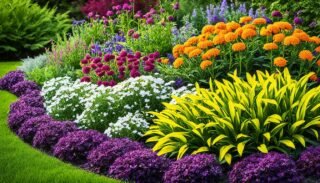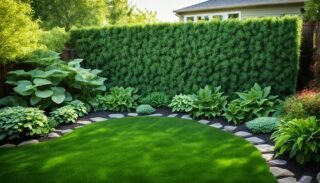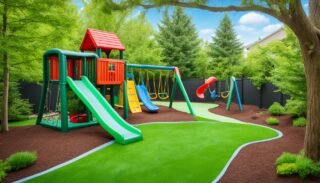Table of Contents
- Why I Started My Sustainable Gardening Journey
- Sustainable Gardening Practices: The Core Principles
- Composting: My Secret to Rich, Healthy Soil
- Water-Wise Techniques I Use in My Garden
- Companion Planting: My Strategy for a Thriving Garden
- Natural Pest Control: How I Keep Bugs at Bay
- Reducing Carbon Footprint in My Gardening Practices
- Sustainable Gardening Tools and Equipment I Love
- FAQ
- Why did you start your sustainable gardening journey?
- What are some core principles of sustainable gardening?
- How do you maintain healthy soil in your garden?
- What water-wise techniques do you use in your garden?
- How do you practice companion planting?
- What natural pest control methods do you use?
- How do you reduce your carbon footprint in gardening?
- What sustainable gardening tools and equipment do you recommend?
Ever wondered if your green thumb could be even greener? I started exploring eco-friendly gardening and found a world that changed my backyard. It turned it into a place that’s good for the planet. I wanted to lower my carbon footprint, and it led to something amazing.
Sustainable gardening is more than using less chemicals or saving water. It’s about taking care of the soil, helping local ecosystems, and living in harmony with nature. By doing this, I made my garden beautiful and helped the planet.
I’ve learned about water-saving and natural ways to fight pests. These green gardening tips have made my garden better for the earth and easier to take care of. Now, my garden is full of life and needs less work to stay healthy.
Key Takeaways
- Sustainable gardening benefits both your garden and the environment
- Water conservation is a crucial aspect of eco-friendly gardening
- Organic pest control methods support a balanced ecosystem
- Native plants thrive with less care in environmentally friendly gardens
- Composting enriches soil health naturally
- Green gardening practices reduce overall maintenance needs
Why I Started My Sustainable Gardening Journey
I began with a few plants on my balcony, just for fun. But soon, my love for gardening grew. Learning about the harm traditional gardening does to the earth made me more aware.
This knowledge made me want to change. I realized my garden could help the planet. By using sustainable methods, I could grow healthy food and help the earth.
Creating a garden that’s good for nature excited me. It was no longer just about making things look nice. It was about living in harmony with nature and saving our resources.
My journey in sustainable gardening has changed me. I’ve grown closer to nature in ways I never thought possible. Seeing bees and butterflies in my garden brings me happiness. I’ve learned to live with nature, not against it.
Now, my garden shows what sustainable gardening can do. It’s where I grow organic food, save water, and help local wildlife. Every visit to my garden reminds me why I started. It’s about making the world better, one plant at a time.
Sustainable Gardening Practices: The Core Principles
I’ve learned that sustainable gardening is all about working with nature, not against it. My garden has become a thriving ecosystem thanks to these core principles.
Conserving Water in My Garden
Water conservation is key in my garden. I’ve installed a drip irrigation system that delivers water directly to plant roots, reducing waste. Mulching helps retain moisture, and I collect rainwater in barrels for dry spells.

Nurturing Soil Health Naturally
Healthy soil is the foundation of my garden. I avoid chemical fertilizers and focus on building soil health through composting and crop rotation. This approach has dramatically improved my soil’s structure and nutrient content.
Choosing Native Plants for My Landscape
Native plants are the stars of my garden. They’re adapted to local conditions, require less water, and support local wildlife. My favorites include coneflowers, black-eyed susans, and native grasses that add beauty and biodiversity.
Implementing Organic Pest Control Methods
Organic pest control keeps my garden healthy without harmful chemicals. I use companion planting to deter pests naturally. Ladybugs and praying mantises are my allies in managing harmful insects. When needed, I make my own organic sprays using neem oil or garlic.
By following these principles, I’ve created a garden that’s not only beautiful but also kind to the environment. It’s a constant learning process, but the rewards are worth every effort.
Composting: My Secret to Rich, Healthy Soil
I’ve found the secret to great soil through composting. It turns kitchen scraps and yard waste into a powerful soil booster. This method is simple and effective.
I mix green and brown materials in my compost pile. Green stuff like fruit peels and grass clippings add nitrogen. Brown items like dry leaves and paper add carbon. I layer them and keep the pile moist, turning it often.
This method works wonders. The finished compost is a natural fertilizer that helps plants grow strong. My garden has gotten much better since I started using it.
- Reduces waste
- Improves soil structure
- Increases water retention
- Promotes beneficial microorganisms
Composting is key to my garden’s health. It’s a green way to feed my plants and lessen my environmental footprint. If you want a better garden, try composting. It’s nature’s recycling at its best!
Water-Wise Techniques I Use in My Garden
I’ve made my garden water-friendly with smart techniques. These methods save water and keep my plants healthy. Here’s how I make every drop count:
Rainwater Harvesting Systems I’ve Installed
My rainwater harvesting setup is a big win. I’ve put rain barrels under my gutters to catch rainwater. This water is great for my plants during dry times. It cuts my water bills and helps the planet.

Mulching to Retain Moisture in My Beds
Mulching helps prevent water loss. I cover my plants with a thick layer of organic mulch. It keeps the soil moist, reduces evaporation, and stops weeds. I use wood chips, straw, and leaves as mulch. They feed the soil as they break down.
Drip Irrigation: My Go-To Water-Saving Method
Drip irrigation has changed how I water my garden. I’ve set up tubes with small holes all over my garden. They deliver water right to the roots, wasting less water. I can control how much water goes out, making sure my plants get just the right amount. This method has greatly reduced my water use while keeping my garden looking great.
With these water-saving tips, my garden is both lovely and eco-friendly. It’s incredible how simple changes can make a big difference in saving water.
Companion Planting: My Strategy for a Thriving Garden

I’ve found that companion planting changes the game for my garden. By picking the right plant friends, I make a garden that’s full of life and fights pests naturally. It’s incredible how smart planting can make such a big difference!
My top plant teams include:
- Tomatoes with basil
- Carrots with onions
- Beans with corn
These teams not only look good but also help each other grow. For instance, basil keeps pests away from tomatoes. And corn gives beans something to climb on.
Since I started this method, I’ve seen fewer pests. Marigolds in my garden keep pests away and draw in good bugs like ladybugs and bees.
To boost garden diversity, I add flowers with my veggies. This makes my garden look beautiful and brings in pollinators. Sunflowers, nasturtiums, and cosmos are my go-to flowers for this.
With companion planting, my garden has turned into a lively, self-supporting place. It’s fulfilling to see how these smart plant teams make my garden healthier and more fruitful.
Natural Pest Control: How I Keep Bugs at Bay
I’ve learned that using organic methods is crucial for a healthy garden. I work with nature, not against it. This approach has made gardening more sustainable and fun.
Beneficial Insects I Attract to My Garden
I enjoy having helpful bugs in my garden. Ladybugs, lacewings, and praying mantises help control pests. I plant flowers like marigolds and sunflowers to draw them in. These bugs eat the pests that harm my garden, so I don’t need chemicals.

Homemade Organic Pest Sprays I Swear By
I make my own pest sprays with ingredients from my kitchen. A mix of garlic, hot peppers, and dish soap works well against many pests. For bigger problems, I use neem oil. These homemade sprays are key to my pest control.
Physical Barriers I Use to Protect My Plants
Sometimes, the best way to protect plants is with barriers. I use row covers to keep flying insects away. For slugs and snails, I put copper tape or crushed eggshells around my plants. These methods are easy and safe ways to keep pests away.
By using these methods, my garden has a balanced ecosystem. It’s great to see my plants do well and pests stay away naturally. This approach helps my garden and the environment too.
Reducing Carbon Footprint in My Gardening Practices
I’ve set out to make my garden carbon-neutral. I began by changing my garden’s layout. Now, it uses fewer resources and produces less waste. This not only cuts down on carbon emissions but also supports nature.
I switched to eco-friendly gardening tools next. I traded my gas mower for a manual one. It’s good exercise and cuts the grass just fine! For other tasks, I use hand tools like rakes and shears. These tools are better for the planet and help me feel closer to my garden.
To meet my carbon-neutral goals, I’ve started doing these things:
- Planting trees and shrubs to absorb CO2
- Using organic fertilizers instead of synthetic ones
- Composting garden waste to enrich soil naturally
- Installing solar-powered lights for evening gardening
These sustainable steps have made my garden beautiful and eco-friendly. It’s incredible how simple changes can greatly reduce our environmental impact.
Sustainable Gardening Tools and Equipment I Love
I’ve found some amazing eco-friendly garden tools that make gardening easier. They help me take care of my garden and keep it green. Let me tell you about my favorites!
Manual Tools That Save Energy
I love my push reel mower. It’s quiet, doesn’t use gas, and works out my muscles too! I always carry my hand trowel and pruning shears. They’re simple but work great, and I don’t worry about batteries or gas.
Solar-Powered Garden Gadgets I’ve Invested In
Solar-powered gardening tools have changed the game for me. My solar fountain keeps birds happy and water moving without raising my electric bill. I have solar lights on my garden paths, making the garden magical at night. These gadgets show that eco-friendly and high-tech can work together.
Upcycled Materials I Use in My Garden
I enjoy giving old items a new life in my garden. Old wooden pallets are now raised beds, and tin cans are quirky planters. My favorite is a vertical garden made from repurposed plastic bottles. These upcycled materials save money and reduce waste. It’s a win-win for me!







